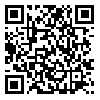BibTeX | RIS | EndNote | Medlars | ProCite | Reference Manager | RefWorks
Send citation to:
URL: http://bloodjournal.ir/article-1-277-en.html
Abstracts
Background and Objectives
The hemoglobin color scale (HCS) is a simple and inexpensive clinical device for screening of blood donors. This study aimed to assess the validity of the device for anemia screening of blood donors.
Materials and Methods
This cross sectional study was done on 170 randomly selected blood donors. The hemoglobin levels of blood samples taken by both skin puncture and venepuncture were measured by HCS and calibrated automated blood cell counter (standard method), respectively. Sensitivity and specificity as well as false results of the above two measurement methods based on the old and new eligibility criteria of hemoglobin level of >12 g/dl and ≥ 14 g/dl were compared. Data were analysed with SPSS 13.5 by paired t test.
�
Results
Analysis of paired results showed that Hb measured by HCS was 0.32 ± 0.65 g/dl lower than the standard method (p<0.001). Sensitivity and specificity of HCS based on previous Standard Operating Procedures (SOPs) were 54.5 and 92.4%, respectively. The frequency rates of false exclusion and inclusion were 7 and 3%, respectively. Sensitivity and specificity of recent SOPs were 85.7% and 87.5%, respectively. Based on recent SOPs, 39.4% of blood donors with Hb range of 12-14 g/dl were considered rejected.
�
Conclusions
Recent SOPs have increased the sensitivity of hemoglobin measurement by HCS but almost half of blood donors need to be retested to see if they are eligible as blood donors this process is however labor intensive and unpleasant for donors. Therefore, further studies are recommended for more appropriate methods of anemia screening in blood donors to be created.
�
Keywords:�Hemoglobins, Blood donors, Hemoglobinometry, Evaluation
| Rights and permissions | |
 |
This work is licensed under a Creative Commons Attribution-NonCommercial 4.0 International License. |





